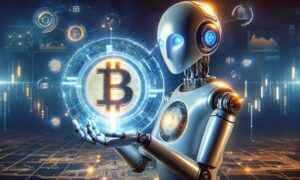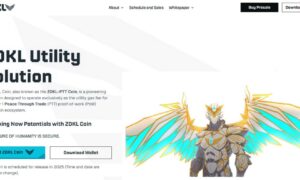Real World Assets (RWA) refer to tangible or intangible assets in the physical world that are given a digital representation or tokenized on a blockchain. This process of tokenization turns these assets into digital tokens that can be bought, sold, or traded on digital platforms. Examples of RWAs include real estate, artwork, commodities, and even financial instruments like bonds or loans. RWA is emerging as a significant narrative within the cryptocurrency space, ranking as the tenth largest market cap. With only $4 billion invested in RWA within the crypto environment, there is substantial room for growth, potentially reaching the top three or even becoming the leading category depending on institutional adoption.
What are the benefits of tokenizing real world assets?
Larry Fink, CEO of BlackRock, has generated significant attention towards Real World Assets (RWA) with the launch of BlackRock’s first tokenized fund, highlighting the increasing interest in tokenization and its potential to revolutionize various sectors by bringing physical assets onto the blockchain. Tokenizing real-world assets (RWAs) onto blockchain platforms transforms how these assets are managed, traded, and invested in, offering several compelling benefits, like:
1. Increased Liquidity
Tokenization can convert traditionally illiquid assets, like real estate or art, into divisible tokens that can be traded on secondary markets. This process increases the asset’s liquidity, allowing owners to sell fractions of their assets more easily than the whole, potentially at a premium due to increased market accessibility.
2. Fractional Ownership
By enabling fractional ownership, tokenization makes it possible for investors to buy into expensive assets with smaller amounts of money. This democratizes access to investments that were previously available only to wealthy individuals or institutional investors, like high-value real estate, fine art, or exclusive private equity.
3. Improved Market Efficiency
Blockchain technology can streamline the trading, settlement, and management of asset tokens, reducing the need for intermediaries such as brokers and banks. This not only lowers transaction costs but also speeds up the process, making markets more efficient.
4. Enhanced Transparency and Security
Tokenization on a blockchain offers unparalleled transparency and security. Every transaction is recorded on a decentralized ledger, immutable and accessible to all, which significantly reduces the potential for fraud and enhances trust among investors and regulators.
5. Global Access
Tokenizing assets breaks down geographical barriers, enabling a global investor base. Investors from around the world can participate in markets previously closed off to them due to regulatory or logistical issues, fostering greater cross-border investment and liquidity.
6. Programmability
Smart contracts automate various aspects of asset management and transactions, including dividends, rent, or interest payments, and enforcement of investor rights. This programmability can introduce automatic compliance checks, dynamic pricing models, and other innovative features that enhance the asset’s value and utility.
7. Regulatory Compliance
Though still evolving, platforms for tokenization are increasingly incorporating mechanisms to ensure compliance with local and international regulations, including know-your-customer (KYC) and anti-money laundering (AML) requirements. This facilitates a safer and more regulated investment environment.
8. Asset Interoperability
Tokenized assets can be integrated into various digital ecosystems, allowing them to be used as collateral in DeFi protocols, for example, or to participate in complex financial instruments across platforms without needing to convert them back to their traditional form.
9. Data Integrity and Management
The blockchain’s immutable nature ensures that the history of an asset—such as ownership changes, valuations, and transactions—is securely recorded and easily verifiable, improving the management and appraisal processes for these assets.
By addressing many of the limitations inherent in traditional asset markets, tokenization has the potential to radically transform investment landscapes, making them more accessible, efficient, and equitable.
Top 5 RWA Cryptocurrencies
- Maker (MKR)
- Centrifuge (CFG)
- Maple (MPL)
- Goldfinch (GFI)
- Rari Governance Token (RGT)
How to create a Real World Asset Token?
To create a Real World Asset (RWA) token, consider using the klever blockchain for its efficiency and ease of use. This blockchain offers tools for defining your asset’s specifics, such as name, supply details, and digital representation. Additionally, KleverChain supports features like staking, which provides liquidity and also security to the project, while rewarding the users. KleverChain’s platform facilitates the entire process of creating a new token, making it a suitable choice for tokenizing RWAs.
For a step-by-step guide, please consider the following video of Klever Insights
Create Your Own Token FAST: Simple Steps with KleverScan!


































